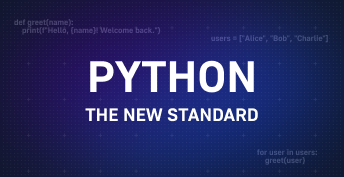What is the role of backend testing?
Backend testing is designed to verify the functionality, performance, and security of the server side of an application or website. This technique is widely used in the software development process and constitutes an important part of it.
Here are some of the main reasons why backend testing is so crutial:
- Functionality check: Backend testing helps ensure that the server is handling requests correctly and responding to them appropriately.
- Performance evaluation: Backend testing involves evaluating the server’s performance when processing requests. This helps to identify bottlenecks in the system, optimize its performance, and ensure stability under heavy loads.
- Quality Assurance: Running backend tests helps developers and the team ensure that each code change does not disrupt other components of the system, keeping the product stable and reliable.
- Process Automation: Automated backend tests allow you to test a large amount of functionality quickly and efficiently, which reduces development time and improves overall product quality.
Thus, backend testing is one of the keys to ensure the functionality, security, and performance of the application, which is essential for successful operation and user satisfaction.
Swagger tool: its purpose
Swagger is a tool for creating, documenting, and testing APIs. It allows developers to describe the structure, functionality, and parameters of an API in a convenient format that can be easily understood and used by other developers or services.
Here are a few key reasons why Swagger is efficient and so popular nowadays:
- API Documentation: Swagger provides the ability to create complete and understandable documentation for your API. Describing methods, parameters, data types, and sample requests/responses makes the process of integrating with your API easier and clearer for other developers.
- Interactive API Testing: Swagger allows you to test APIs directly from an interface created from the API description. Developers can submit requests and view responses, making it easier to debug and verify that the API is working correctly.
- Client library generation: Swagger allows you to automatically generate client code to work with your API in a variety of programming languages. This simplifies the integration process for developers who use your API.
- Collaboration and standardization: Swagger standardizes API descriptions, which facilitates teamwork between developers, frontend and backend teams. It creates a common language for API descriptions, which facilitates better communication and collaboration.
- Automatic documentation generation: Swagger allows you to generate documentation based on API code, which reduces the time spent maintaining and updating documentation in line with API changes.
Using Swagger helps simplify the API development, integration, and maintenance process, making it more accessible and understandable to other developers and users.
The cons of focusing on Swagger as the only backend testing tool
While Swagger is a powerful tool for documenting, testing and standardizing APIs, it has several drawbacks and limitations:
- The difficulty of supporting large and complex APIs: When dealing with large and complex APIs, Swagger specification files can become very voluminous and difficult to manage. This can make the process of maintaining and updating documentation more difficult.
- Needs to be updated: As an API evolves, its functionality may change and the Swagger specification file must be kept up-to-date to reflect all changes. This requires careful manual or automated changes to the API description.
- Difficulty in creating an accurate description: Some aspects of the API can be difficult to describe accurately in Swagger. For example, some complex authentication scenarios or specific types of requests may require a more thorough description than the basic Swagger functionality provides.
- Limited support for some technologies: While Swagger supports most common technologies, in some cases additional configuration or customization may be required to work with specific technologies.
- Not always perfect interoperability with some types of architectures: In some cases, the API architecture may be more complex than the description supported by Swagger. For example, if there are complex data flows or event-driven architectures, Swagger may not be able to describe the full essence of such an API.
Meanwhile, other tools or approaches to API documentation and testing may be appropriate for different projects and needs.
What’s Postman used for?
Postman is a tool that provides API development, testing, and debugging features. As opposed to Swagger, which concentrates on API documentation, Postman is designed to create, submit, and validate API requests, as well as automate this process.
Here are a few advantages of Postman over Swagger:
- Send requests and check responses: Postman makes it easy to send different types of requests (GET, POST, PUT, DELETE, etc.) to APIs and check responses, making it a great tool for debugging and testing APIs.
- Ease of Use: Postman’s interface is easy to learn and provides a convenient way to create and organize queries into collections, making it attractive to developers of all levels.
- Query Collections: Postman allows you to create collections of queries, making it easy to organize and reuse queries and their parameters. This is useful when testing different scenarios or when working with multiple API endpoints.
- API Testing: Postman supports writing tests to automate the validation of API responses. This allows you to create scripts to automatically check the correctness of API responses and status.
- Collaboration tools: Postman provides tools to collaborate and share collections of requests with other team members. This is useful for collaborative testing and sharing information about working with the API.
- API automation and monitoring: Postman offers the ability to create scripts and collections to automate API testing and monitoring processes, allowing you to monitor their performance on an ongoing basis.
Conclusion: What will work best?
Although Swagger has limitations, it remains a popular and powerful tool for many developers due to its ability to standardize API descriptions and simplify API handling. Unlike Swagger, which focuses on API documentation, Postman focuses on active testing, debugging, and automation of API workflows.
Both tools can be useful in development, but the choice between them depends on the specific needs and goals of the app. Therefore, it is crucial to assess the specific project correctly first, and then make a choice in favor of a particular technology or tool.
At IT-Dimension, we offer a comprehensive range of quality assurance services tailored to meet the diverse needs of our clients. From manual to automated testing, we ensure the seamless functionality and reliability of solutions across various complexities and stacks. Contact us to discuss the implementation of QA process on your project.










